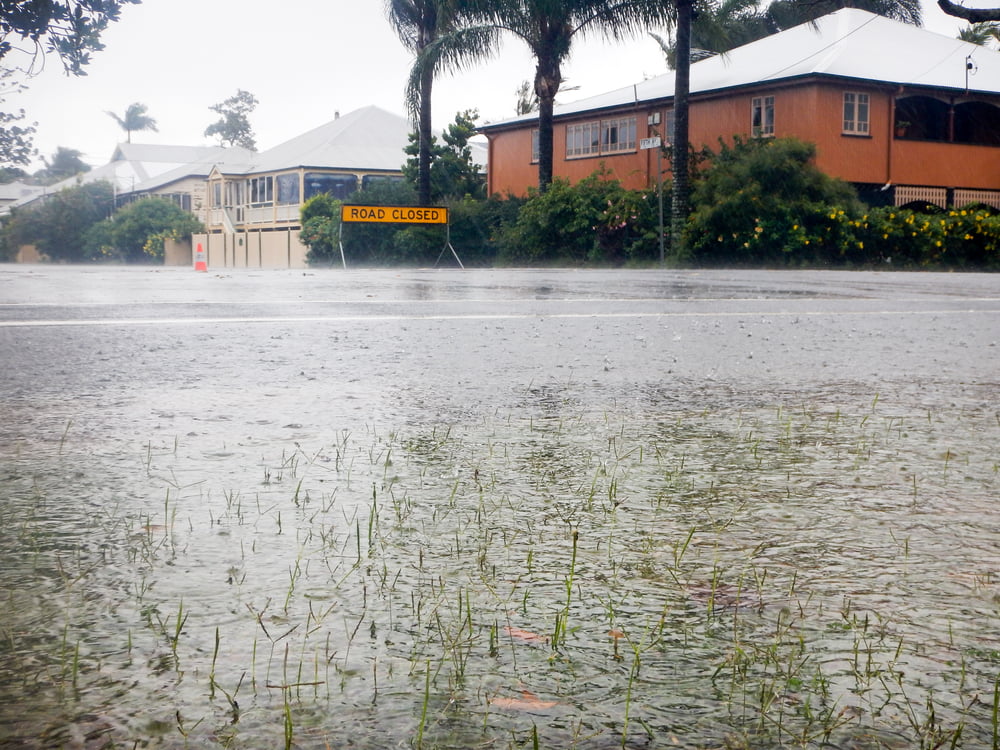It’s that time of year again – storm season! Every year around this time, Brisbane braces for impact. As we all know, Brisbane suffers from intense thunder storms all summer, and these storms can be extremely damaging for your home. With intensely strong winds, golfball-sized hail, torrential rain, and lightning, your home can undergo a barrage of nature’s fury all in a matter of minutes. Brisbane storm damage can be significant.
Storms can result in flooding, structural damage, fire, broken and damaged windows and roofs, and a whole host of other issues. You could be paying a fortune for repairs. For more information on what signs you should be looking out for after a storm, read on!
The 5 deadly signs
Brisbane storm season can be highly destructive – with severe winds, heavy rain, damaging hail and lightning, and the potential loss of electricity. But what impact does the season have on our homes and properties, and how can you spot storm damage on a home you’re looking to buy?
Storm damage can take many forms, but we’ve narrowed it down to 5 of the most common types of damage your house might sustain after an intense summer storm.
- Intense winds resulting in roof and structural damage. Damage in these areas can be very expensive, as winds have the capacity to rip tiles or other forms of roofing completely off the top of your house. The resulting roof can be structurally weak and may not survive any subsequent storms.
- Torrential rain resulting in flooding. Water is an incredibly destructive force, and can result in hundreds of thousands of dollars of damage. Water damage can also lead to mould issues and structural damage in floors and ceilings.
- Lightning strikes, resulting in electrical damage and fires. Lightning strikes can be devastating and result in a total loss of your home. If appliances are on during a storm, lighting strikes can be responsible for those appliances malfunctioning or even exploding. Faulty wiring can also have a nasty impact in a storm.
- Flying debris. This might include trees or property that hasn’t been properly tied down, resulting in damage to windows, walls, ceilings and roofs. If you have outdoor furniture or large overhanging trees, these can become a hazard in the midst of one of Brisbane’s intense storms. Also check fences for damage or potential hazards, and any sheds or outlying buildings.
- Hail damage. This can be incredibly destructive to car ports, sheds, windows, skylights, or anything of that kind. Dents are the most common form of damage, but glass objects can be cracked or even smashed.
Is location a factor?
Data gathered by insurance group NRMA in October 2017 revealed that south-east Brisbane is the most storm affected region in the state, accounting for 24% of all storm-related insurance claims.
The five most storm affected suburbs of Brisbane include:
• Forest Lake
• Capalaba
• The Gap
• Carindale
• Chapel Hill
If you live in one of these areas, storms need to be at the forefront of your mind when it comes to home maintenance and preventative measures. Also, if you’re looking to purchase property in any of these areas, make sure you get in an experienced house inspector to do a thorough inspection of the property pre-purchase. Any remaining storm damage from previous years needs to be dealt with, and quickly.
What can I do to minimise the impact of storm season on my house?
Worryingly, less than one in five people (or 18%) recognised that storms pose the biggest risk to their property when it comes to damage. This is despite nearly half of all home claims over the past financial year relating to storm damage in some way. There’s certainly an issue here with complacency and a lack of awareness about the severity of storms in Brisbane and the damage they leave in their wake.
In order to maintain your home and keep your family safe, you need to stay aware of any storms that might be rolling in to Brisbane, and monitor their severity. The Bureau of Meteorology has a live radar, and you can subscribe to their alert system to keep abreast of any updates with the weather as they happen. The SES has a handy webpage that gives hints and advice. They also advise that people get ready for storm season now, or even as early as November, to help reduce any possible damage to homes. Doing so will also limit the risk of you or your family being injured during a storm.
According to the SES website, home owners need to trim overhanging trees and branches, clean out their gutters, secure any loose items in yards or anywhere on your property, and check the condition of the roof.
What do I do if I’ve sustained damage?
If your home has sustained any damage in a storm, you need to first consult your insurance company. Once that’s been approved, a contractor needs to be hired and the damaged properly repaired. If you are looking at purchasing a home and you believe it has sustained damage in a previous storm, engage a pre-purchase property inspector and advise them of your worries. If you notice a damp smell, signs of discolouration in paint, peeling plaster or unusual sloping of the yard – these could all be signs of previous storm damage.
An experienced inspector has seen the signs of Brisbane storm damage a thousand times before. They’ll be able to tell you more about the damage and the impacts it might have on the safety and saleability of the property. If damage is identified, you’ll be able to engage an appropriate tradesperson to quote on repairs, use the damage as a price bargaining tool before you buy, or, ultimately, withdraw from the sale contract. Most importantly, you’ll be fully informed and in a solid position to make a choice about whether or not to invest.

